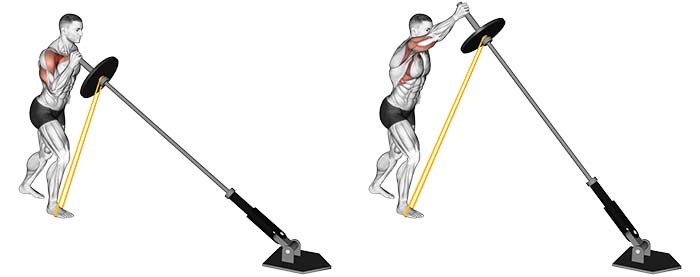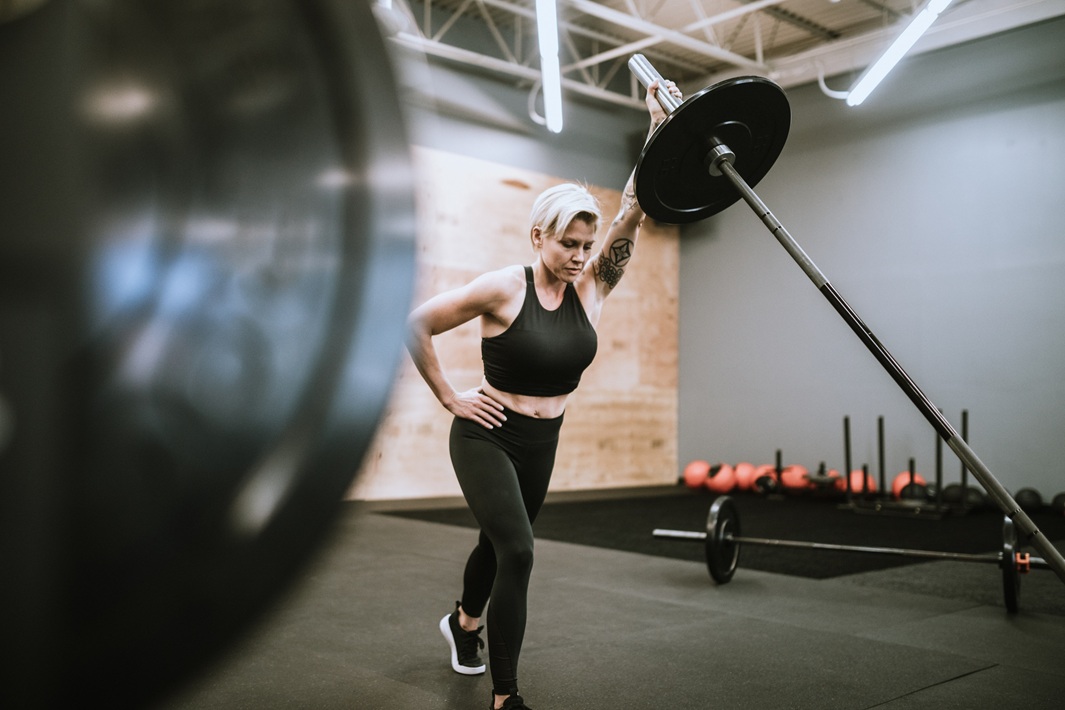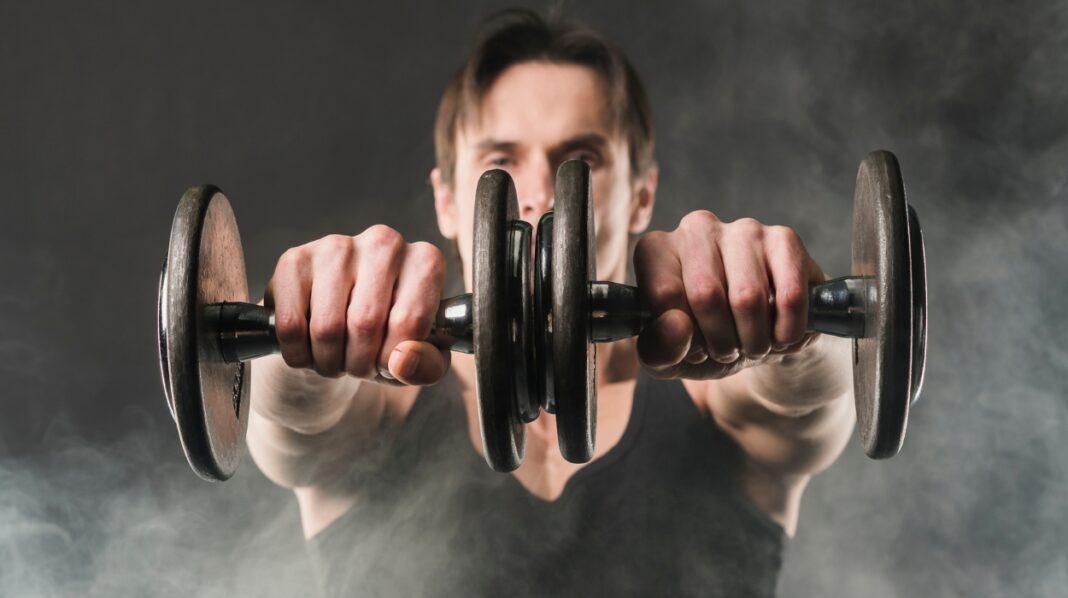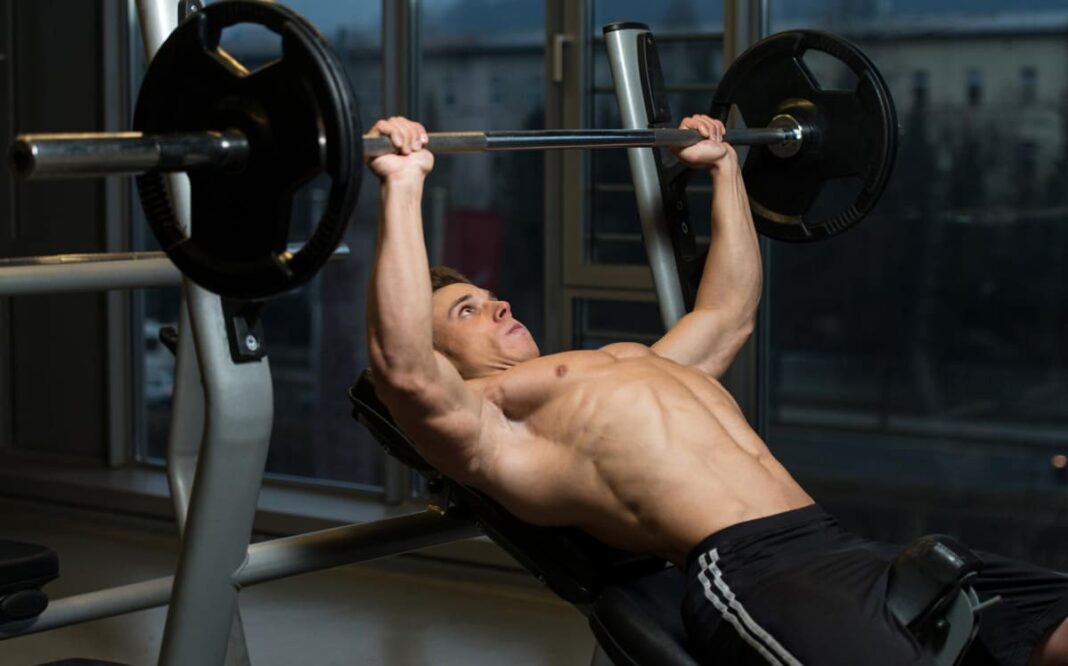Landmine Press: The Shoulder-Safe Weapon for Stronger, Bigger Delts
Heavy barbell presses are great for building pressing power and mass, but not every lifter’s shoulders can handle the strain of strict vertical pressing. That’s where the Landmine Press shines.
By pressing on an angled barbell path, the landmine variation reduces stress on the shoulder joint while still hammering the front delts, upper chest, and triceps.
For bodybuilders, it’s a way to train the shoulders hard without beating them up—and for strength athletes, it builds pressing power that carries over to both the overhead press and the bench press.
Whether you’re chasing strength or aesthetics, the Landmine Press belongs in your delt arsenal.
Muscles Worked
The Landmine Press is technically a compound movement, engaging multiple muscles through the press.
- Primary Muscles:
- Anterior deltoid (front delt) – main driver of the press.
- Upper chest – heavily involved due to the pressing angle.
- Secondary Muscles:
- Triceps brachii – assist in extending the elbows.
- Lateral deltoids – stabilize the shoulder.
- Core (obliques, abs) – especially in standing and half-kneeling variations.
- Serratus anterior – helps with scapular movement.
👉 Compared to overhead press, the Landmine Press is more shoulder-friendly and recruits upper chest alongside the front delts.

How to Perform the Landmine Press (Step by Step)
Setup
- Load one end of a barbell into a landmine attachment (or wedge it in a corner).
- Add plates to the free end of the barbell.
- Grip the barbell with one or both hands at chest height.
Standing One-Arm Landmine Press
- Stand tall with feet shoulder-width apart.
- Hold the barbell end at chest level with one hand, elbow tucked.
- Brace your core, slight bend in knees.
- Press the bar upward and forward in an arc until arm is extended.
- Slowly lower back to chest level under control.
Half-Kneeling Landmine Press
- Kneel with the same-side knee down (e.g., right knee down, pressing with right hand).
- Grip barbell end at chest height.
- Maintain upright torso, core braced.
- Press bar upward and forward, avoiding leaning back.
- Lower under control, keeping tension.
Two-Arm Landmine Press
- Stand tall with feet shoulder-width apart.
- Grip barbell end with both hands cupped at chest level.
- Press bar forward and up in an arc.
- Lower slowly to chest.
Tempo Recommendation:
- Up (concentric): 1–2 seconds.
- Pause: 1 second at the top.
- Down (eccentric): 2–3 seconds.
Common Mistakes and Fixes
- Leaning back excessively
- Mistake: Turning the press into an incline chest press.
- Fix: Keep ribs down, core braced, torso upright.
- Using momentum
- Mistake: Exploding through with hips instead of delts.
- Fix: Use controlled tempo—save push press style for intentional power work.
- Elbow flare
- Mistake: Letting elbows flare wide, straining shoulders.
- Fix: Keep elbow slightly tucked, pressing in a natural arc.
- Cutting range of motion
- Mistake: Not lowering barbell fully to chest.
- Fix: Start every rep from chest height for maximum activation.
- Overloading too quickly
- Mistake: Loading plates too heavy and losing control.
- Fix: Progress gradually—landmine leverage makes lighter loads feel heavier.
Variations and Alternatives
- Standing One-Arm Landmine Press
- Best for core activation and shoulder stability.
- Half-Kneeling Landmine Press
- Forces strict form, reduces lower-body momentum.
- Two-Arm Landmine Press
- Allows heavier loading, more chest involvement.
- Rotational Landmine Press (Landmine Twist Press)
- Add torso rotation for athletic power and oblique engagement.
- Single-Arm Floor Landmine Press
- Performed lying down; emphasizes shoulder stability.
Programming Guidelines
The Landmine Press works as both a strength accessory and a hypertrophy tool, depending on your goals.
For Strength (Performance Focus)
- Sets/Reps: 4–5 sets of 5–8 reps.
- Rest: 2–3 minutes.
- Load: Moderate to heavy, but strict form.
- Placement: After barbell overhead press or incline press.
For Hypertrophy (Aesthetics Focus)
- Sets/Reps: 3–5 sets of 10–15 reps.
- Tempo: Slow, controlled, with focus on stretch and squeeze.
- Rest: 60–90 seconds.
- Superset Options: Pair with front raises for a delt-burning combo.
Bodybuilder’s Tips
- Think “arc forward.” Don’t press straight up; let the bar travel naturally.
- Control the eccentric. The lowering phase builds as much size as the press.
- Use it as joint-friendly volume. Great alternative if your shoulders ache from strict OHP.
- Half-kneeling variation for bodybuilding. Strips away momentum, forces the delt to work.
- Push higher reps for pump work. Landmine angle makes 12–15 reps brutal but effective.
Strength vs Aesthetic Outcomes
- Strength-Oriented Lifters: Builds overhead pressing stability, transfers to OHP and bench. Safer option during deloads or recovery phases.
- Aesthetic-Oriented Lifters: Creates dense front delt growth without overloading joints. Pairs well with lateral and rear delt work for balance.
👉 Smart programming uses Landmine Presses for joint-friendly strength AND hypertrophy.
Practical Takeaways
- The Landmine Press is a joint-friendly pressing exercise that hammers the front delts and upper chest.
- Great alternative for lifters with shoulder mobility issues.
- Works equally well for strength (low reps, heavier loading) or aesthetics (higher reps, slower tempo).
- Variations like half-kneeling and single-arm presses increase delt isolation and stability demands.
- Add it after heavy pressing or as a main shoulder-builder on push days.
Conclusion
The Landmine Press bridges the gap between shoulder safety and delt growth. It’s easier on the joints than strict vertical presses, but still provides the tension and overload needed for serious muscle building.
For strength athletes, it develops pressing stability that carries over to barbell lifts. For bodybuilders, it delivers front delt hypertrophy while sparing the shoulders from constant heavy overhead loading.
👉 Bottom line: Whether you’re managing shoulder stress, building raw pressing power, or carving out aesthetic delt detail, the Landmine Press is a must-have in your shoulder training toolbox.



